Heike Odermatt Teaches People to Love Nature Through Photography
![]()
PetaPixel saw nature photographer Heike Odermatt’s work featured in the “Gallery” section of the most recent issue of Elements Magazine and was instantly struck by Odermatt’s featured image of a reflection in a harsh, Arctic landscape.
After a quick visit to her website, the positive impression snowballed. Odermatt’s work is rich in detail, incredibly diverse, and sensational.
PetaPixel sees many talented photographers’ work, but Odermatt was a new name despite her excellent photography. PetaPixel contacted Odermatt to learn about her career and excellent portfolio.
Odermatt’s Origin Story
Heike Odermatt got her first camera when she was 17 or 18; she isn’t quite sure anymore. It was a Rollei 35, and she received it on loan. Although she had long been enamored by photography, she could only shoot sporadically with her first camera because film and processing were prohibitively expensive.
“During that time, I mainly tried to photograph horses, my great passion for as long as I can remember,” Odermatt tells PetaPixel. She continues, “Unfortunately, the Rollei with its 35mm wide-angle fixed focal length lens was not ideal for horse photography because the proportions are quickly distorted, which appears unnatural for a horse portrait.”
![]()
A few years later, in the early 90s, Odermatt bought her first SLR camera, a Minolta XE1 from the 1970s. She paired 50mm prime and 80-200mm telephoto zoom lenses to her Minolta.
“I taught myself photography with this camera,” Odermatt explains.
In the intervening years, Odermatt worked as a graphic designer for a major newspaper company and even stayed working there after she became serious about the prospect of being a more serious nature photographer in 2002. Odermatt tells PetaPixel that she has “never been a full-time wildlife photographer.”
While nature photography is her passion and primary focus, she has tried her hand at other types of photography over the years, including studio portraiture, reportage, and sports photography.
Even though she’s done many types of photography, “Nature photography still fascinates me the most. It allows me to look for ever-changing motifs and lighting situations while enjoying all the beauty of nature,” Odermatt says.
“Staging an image in a studio with different poses and studio lights was not challenging enough for me, and working with people costs me a lot of energy. I like to work with existing light and changing circumstances and adjust my photography accordingly.
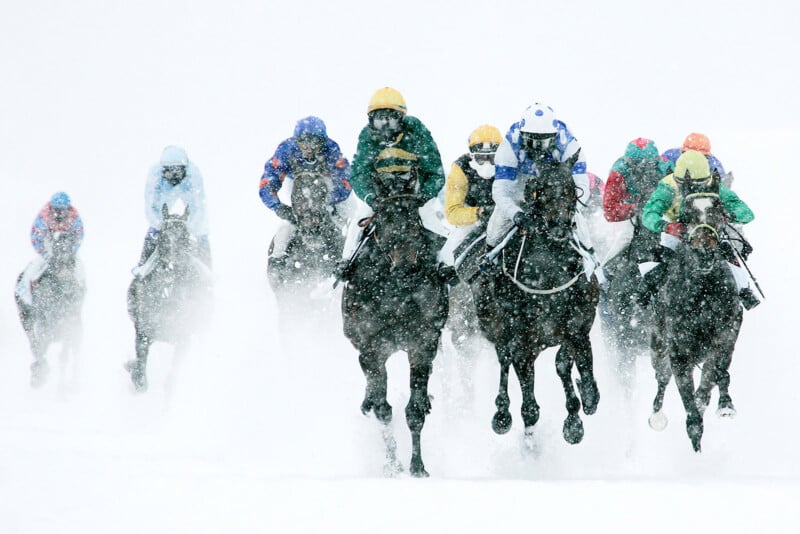
20 Years of Awards and Honors
Over the past two decades, Odermatt has had the honor of receiving numerous awards and being on competition juries herself.
2006 was a special year for Odermatt because it was the first time she entered a competition. She entered the GDT Nature Photographer of the Year, and six of her photos were awarded.
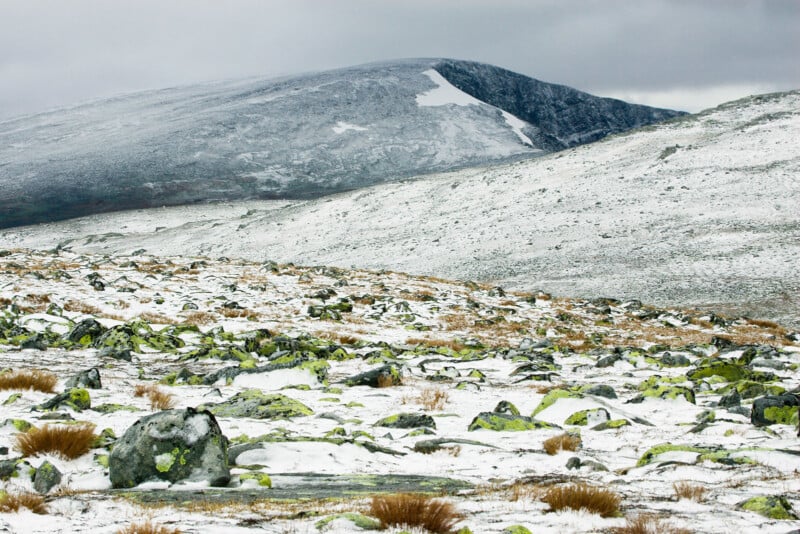
Another significant accomplishment was winning an award in the popular Wildlife Photographer of the Year competition and the European Wildlife Photographer of the Year contest for the same image.
Winning two awards around the same time with the same photo “made it a double highlight for me,” says Odermatt.
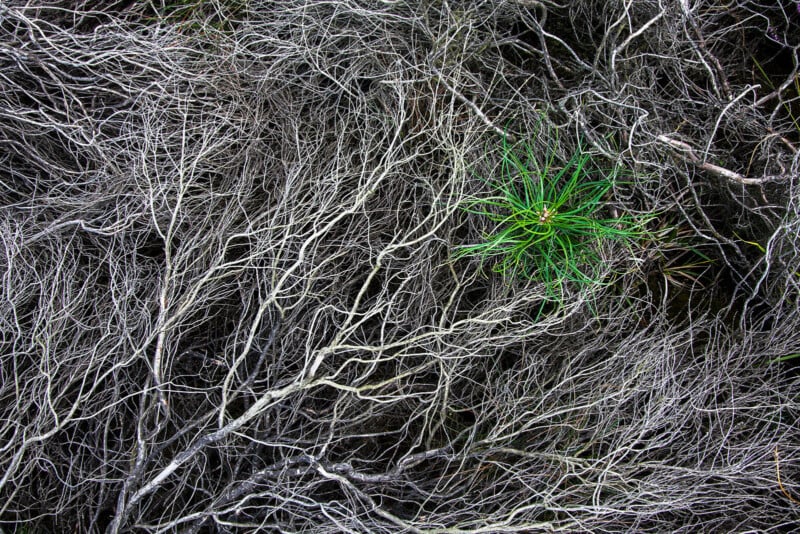
Odermatt tells PetaPixel that it’s not always her newest photos that win awards. For example, the picture below, “When the Ice Melts,” had long been tucked away in Odermatt’s archives. “I had somehow overlooked this image for a long time,” she laments. It caught her eye long after she captured the photo, and it ended up winning second place in the European Wildlife Photographer of the Year competition in 2017.
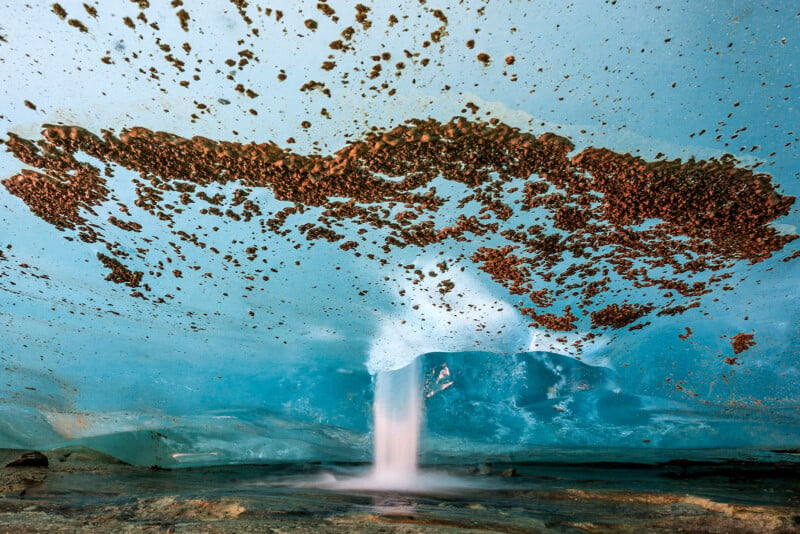
“It’s good that you look through your archive from time to time. Photos often come to light that you overlook shortly after taking the photo or because you have not yet had a personal bond with them. For me, the photos often must mature in the archive for a while, just like good whisky,” Odermatt says.
“Finally, I would like to highlight my latest award, which was an important stimulation for me personally to continue fighting to be more active in photography again,” Odermatt says.
She’s been struggling with an ongoing illness and has been able to take photos only sporadically “for many years.” The image, “Heather in the Last Light of the Sun,” is one of Odermatt’s newer images and was awarded in the European Wildlife Photographer of the Year competition two years ago.
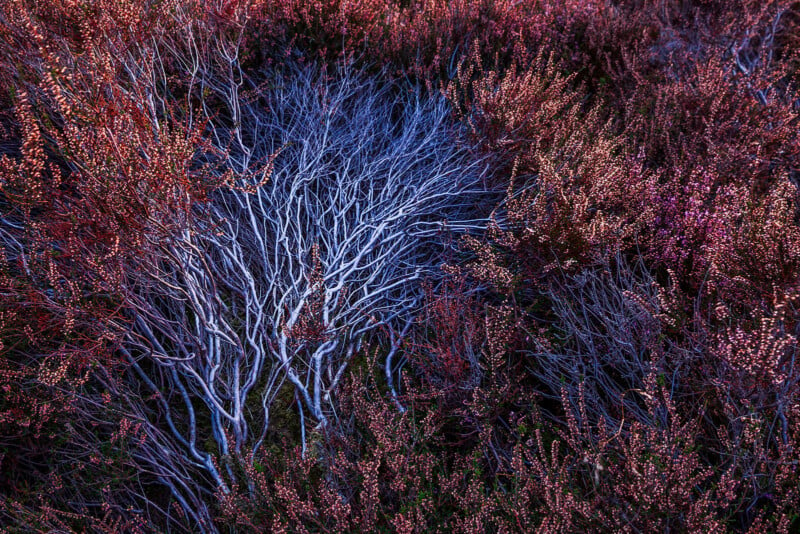
Having been part of juries, Odermatt knows firsthand the factors affecting which photos win awards.
“Which photos ultimately achieve the placements depends, among other things, on the composition of the jury, the respective trends in nature photography, and the number of new, good, and well-implemented picture ideas that have been submitted,” Odermatt explains.
She tells PetaPixel that as digital photography has become commonplace over the past couple of decades, the quality of submitted photos has continually improved.
“Cameras have become technically more sophisticated, and it’s much easier to travel nowadays,” Odermatt says.
She adds that because so many amazing photos are entered into competitions these days, photographers shouldn’t feel discouraged if they don’t win. However, she says, “It’s always a great honor to get awarded at photo contests.”
![]()
A Changing Style or an Evolving Workflow
Alongside the diversity featured in Odermatt’s portfolio, there appears to be a shifting photographic style. However, when PetaPixel asked Odermatt if her style has changed over time, she replied that she doesn’t think it’s changed much in the past 20 years.
“Actually, I don’t think my photographic style has changed that much in the last 20 years, I still listen to my gut feeling. On the one hand, what has changed is the technology. The digital makes a lot more possible. In the analog era, I must have thought about 10 times whether I should press the shutter button or not, and this by every photo I made. Each press of the shutter button costs money. Digital cameras have made it possible for me to implement my creative ideas, which I already had before, but couldn’t always bring to life,” Odermatt says.
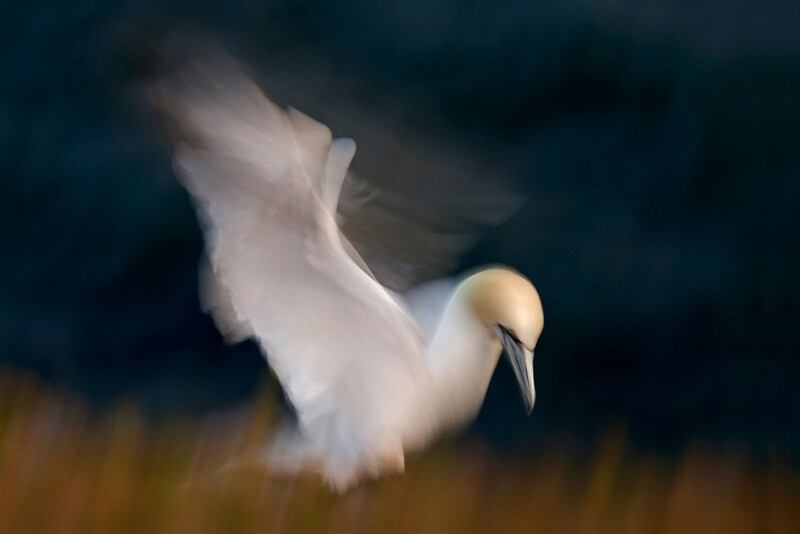
She made the transition to fully digital photography between 2006 and 2008. At this time, Odermatt began photographing northern gannets using intentional camera movement when the birds were trying to land.
“I certainly hadn’t seen similar photos from other photographers during that time or before. These photos then became popular through social media, and today, gannet photography with intentional camera movement has become a popular workshop highlight for other photographers,” Odermatt says.
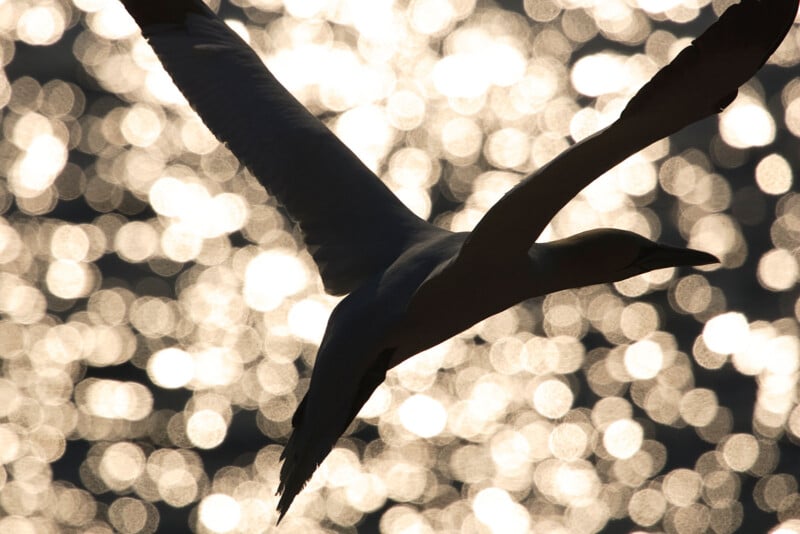
That said, while Odermatt’s style, and the types of photographs she wanted to capture, may not have changed much, her ability to express herself has evolved with improved technology and the affordability of shooting with digital cameras.
“On the other hand, in all these years, I was mostly only able to photograph during my travels, and I tended to leave out the very creative photography because I always felt like I didn’t have enough time,” Odermatt says.
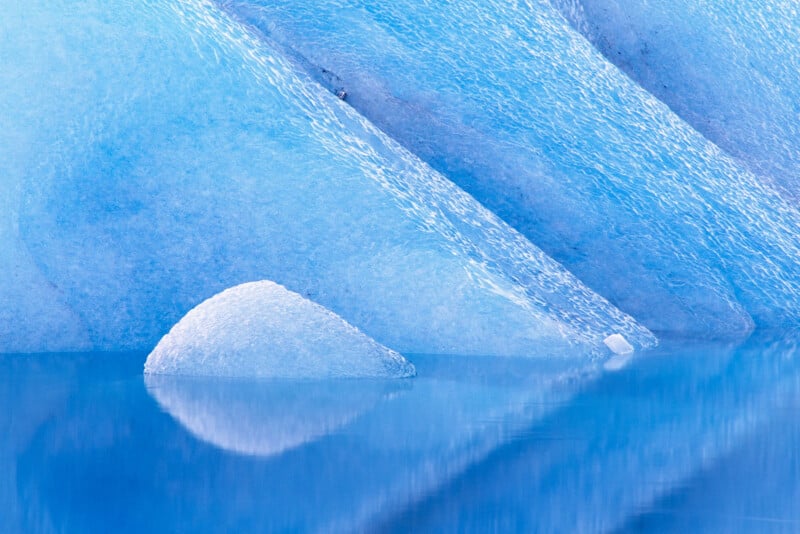
She tells PetaPixel it’s much easier to be creative at home. However, she rarely had time at home because of work and other commitments. Her illness has made travel much more challenging, so she mostly only captures new photos in her immediate surroundings, “which has led to more abstract photos.”
“Also, because I usually can’t choose the best light and location, I must let myself be guided when it’s physically feasible. One deals a little more creatively with the subjects that one finds at this moment,” Odermatt says.
Further, where Odermatt lives in the Netherlands isn’t especially rural. Nature is less extensive than in other areas where Odermatt has always loved to photograph, which adds an extra challenge. To overcome these difficulties, “I tend to try to get into details or take very intimate landscape shots,” Odermatt explains.
![]()
“What appeals to me most about abstract photography is that I can move away from pure documentation and give the photos a different dimension. I want to capture the secrets that seem hidden in nature for most people and then hope that these images will show the viewer a different perspective of nature, but without the images being digitally manipulated,” she says.
She enjoys experimenting with warm versus cool color contrasts, which is prevalent throughout her portfolio.
“For me, graphic lines, patterns, and textures bring a certain calmness and harmony to a photo. A good balance in the image is important to me, the “chaos” wants to be ordered, and I achieve this by paying attention to colors, lines, and the like,”
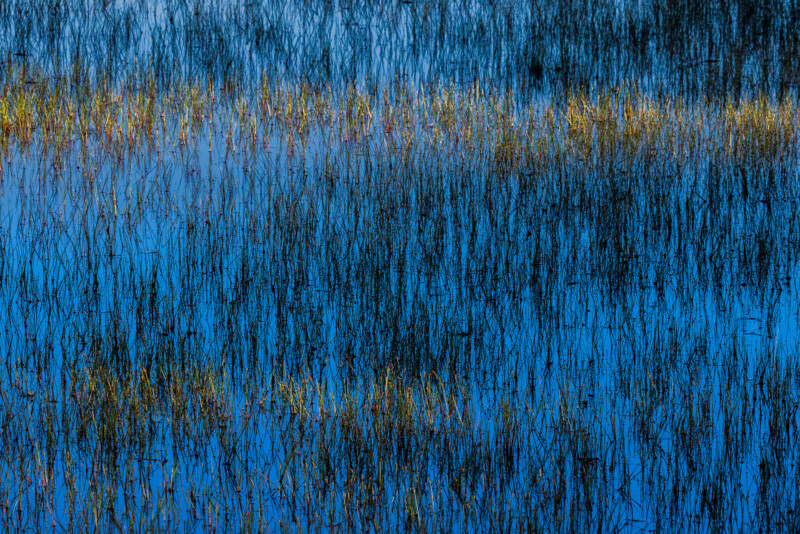
Awakening Imagination through Wildlife Photography
Alongside landscape photography, Heike Odermatt’s portfolio features a lot of wildlife photography.
“My approach to wildlife photography isn’t that different from landscape photography. My gut feeling is always very important to me. A photo must speak for itself,” Odermatt says.
![]()
It can sometimes be easy to capture a captivating landscape image in a spectacular location, but with wildlife photography, it’s less about the place and more about the moment.
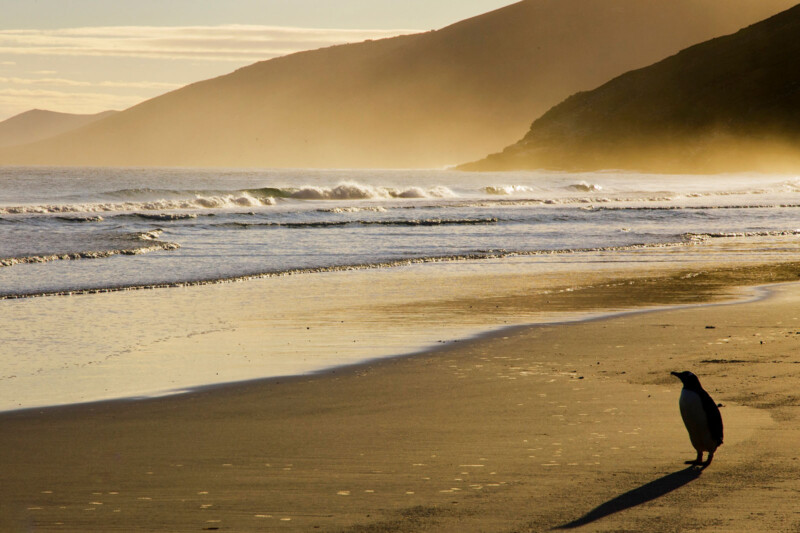
“If a wildlife photo tells a little story or awakens the viewer’s imagination, then it suits me,” Odermatt says.
Part of capturing these all-important moments is being familiar with the animals someone wants to photograph. Odermatt enjoys learning more about animals through observation. She tries to disturb her subjects as little as possible and believes that the experience of wildlife is just as important as her photographs.
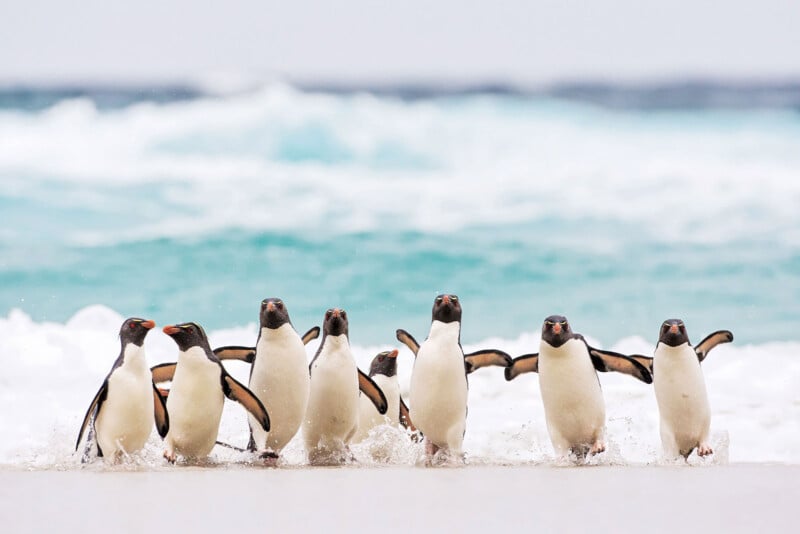
“Photographing from hides or feeding wild animals is not my way of photographing animals, even if this type of wildlife photography would make it much easier for me today.”
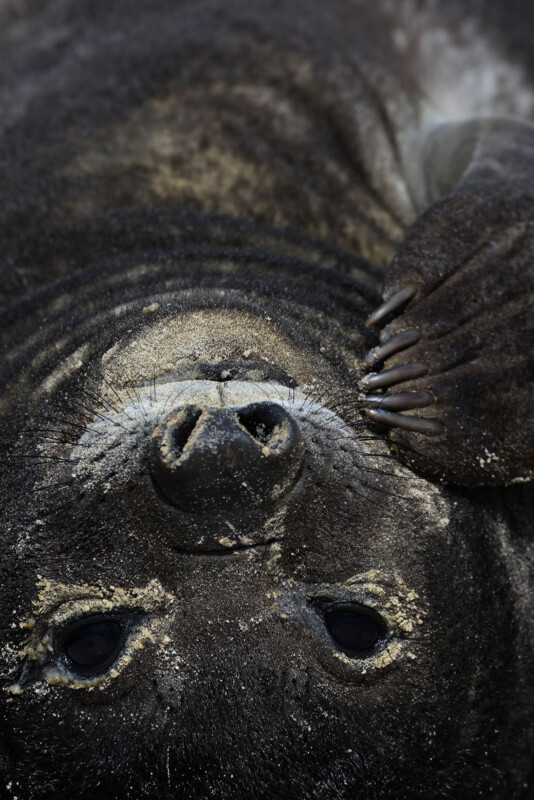
There are many wildlife photos in Odermatt’s portfolio captured on the Falkland Islands, and few animals have quite as much personality as penguins.
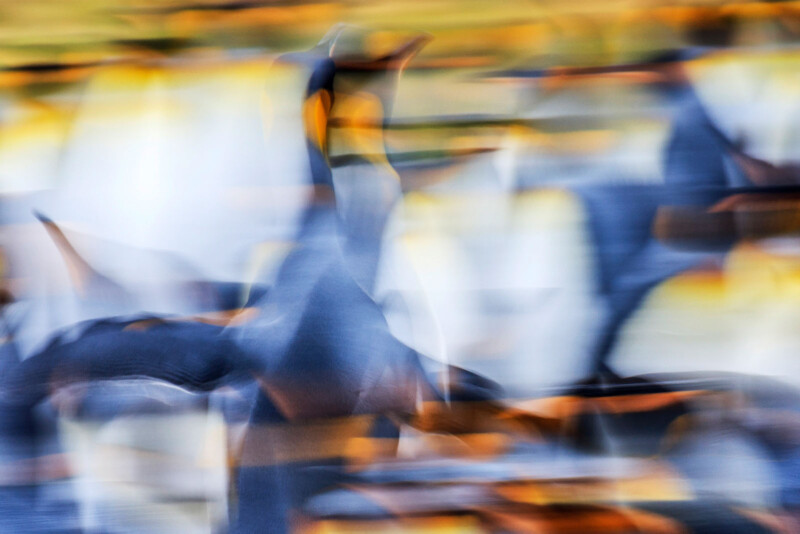
“I really like the penguins. After two trips to the Falkland Islands many years ago, I still feel a certain homesickness. It feels good when animals are not afraid or stressed by humans,” Odermatt says of her experience there.
She fulfilled another wildlife photography dream a few years ago when she saw wild polar bears in Svalbard.
“I always wanted to see a polar bear. On Svalbard, we were lucky enough to meet several polar bears during a sailing trip. One polar bear we were able to observe for a few hours. I immediately fell in love with this charismatic animal, and I hope that I can experience this again,” Odermatt explains.
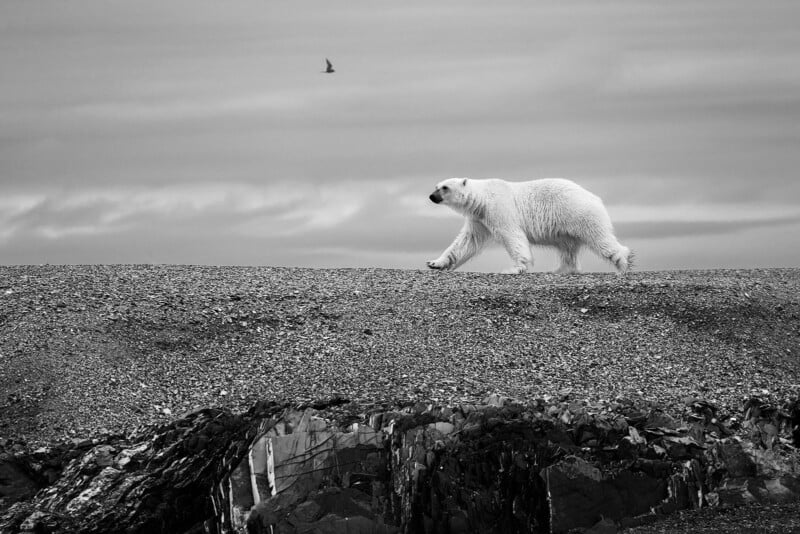
Macro Photography Utilizes the Same Photographic Skills in a Much Different Way
Sometimes a landscape doesn’t grab Heike Odermatt. During some of these unlucky outings, she’s taken the opportunity to do macro photography.
“I don’t have any special equipment for macro photography. Most macro photographers probably have a larger selection of lenses, but I only own one, an older Sigma 150mm f/2.8 APO Macro DG HSM, and a set of extension tubes,” Odermatt says.
She also does a lot of macro photography using telephoto lenses, ranging from the shorter, classic 70-200mm f/2.8 telephoto zoom to longer lenses like a 100-400mm zoom or a 500mm f/4 prime. In these cases, she tells PetaPixel that she often uses a teleconverter or extension rings.
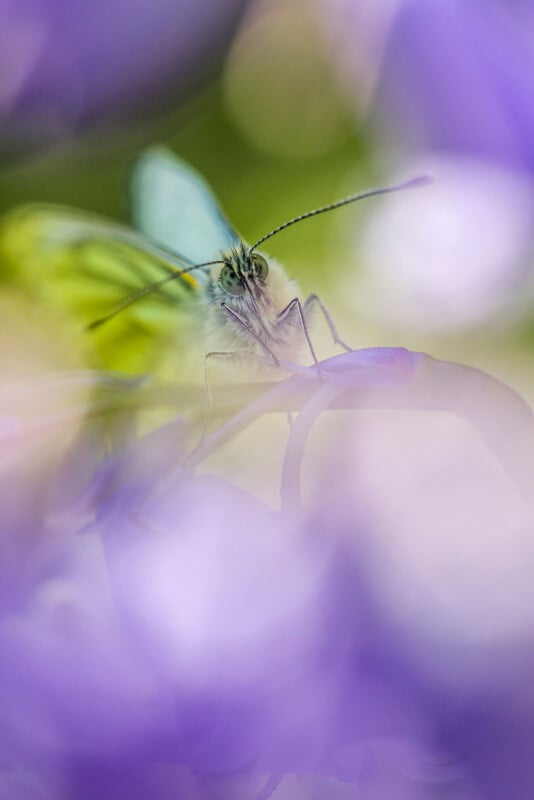
“I think that every genre in photography stands and falls with a good photographic eye. Starting with the correct composition of the photo, what do you include, and what do you leave out? How does the level of sharpness progress? For me, the following always applies, I only try to include the essentials into the composition and try to frame out everything else,” says Odermatt.
Like with her wildlife photography, she finds that macro photography requires a very good background.
“For me, macro photography feels like a slightly less demanding type of photography than landscape photography. In landscape photography, you are completely dependent on the situation on-site: weather, light, and atmosphere. Disturbing human factors are also an aspect for me as a nature photographer that I pay attention to. Even though one could easily stamp away such disturbing elements with an image editing program today, I prefer not to take these photos at all, or I search for a certain composition for so long that all disturbing factors are eliminated from the picture,” explains Odermatt.
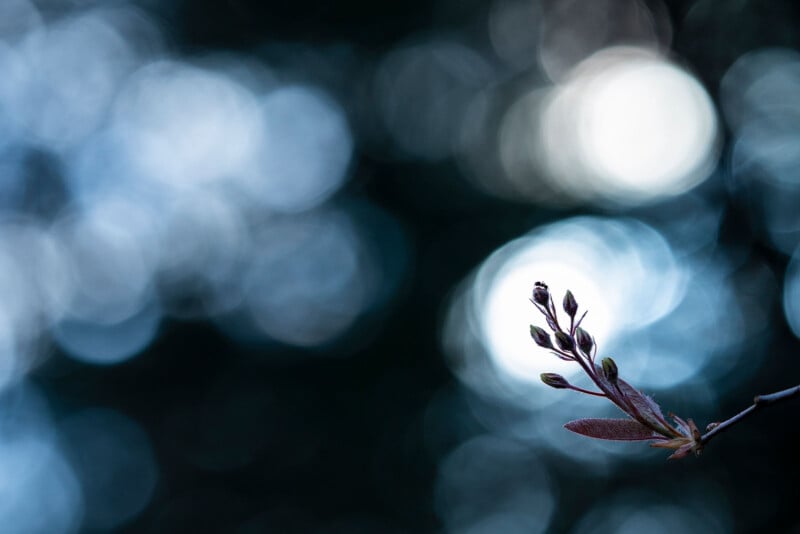
The idea of patience and even the idea of not capturing a photo at all came up a few times during PetaPixel’s chat with Odermatt. She greatly emphasizes leaving things alone and waiting for the right moment. If the right moment doesn’t come, she won’t force it.
“I simply try to make the best of the situation that nature offers me,” she says.
The Arctic’s Unyielding Hold on Odermatt
Although her health has negatively impacted Odermatt’s ability to travel these days, she has been to many places over the years.
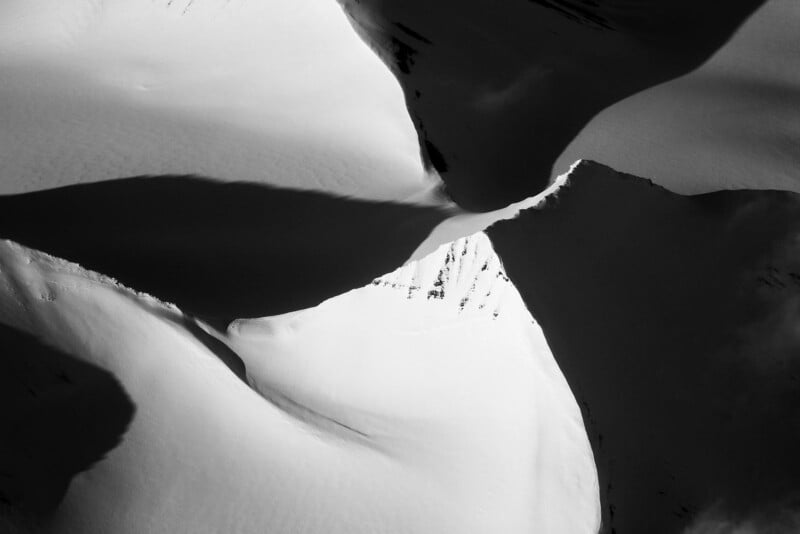
“I have lost my heart in the world’s cold regions where nature still dominates,” Odermatt says. “It makes me feel very small and humble and shows nature’s power.”
These wild places stand in strong contrast to Odermatt’s home, the Netherlands, where she’s lived for the past 40 years after growing up in Germany.
Odermatt still hopes to visit more new locations in the coming years. “Greenland is still a big wish of mine, which I hope will come true sometime in the next few years. A very big dream is the Antarctic, which I could have almost fulfilled in 2012 on a sailing boat with a handful of nature photographers, but unfortunately, my health didn’t allow it. This dream still wants to come true. Who knows what the future will bring?”
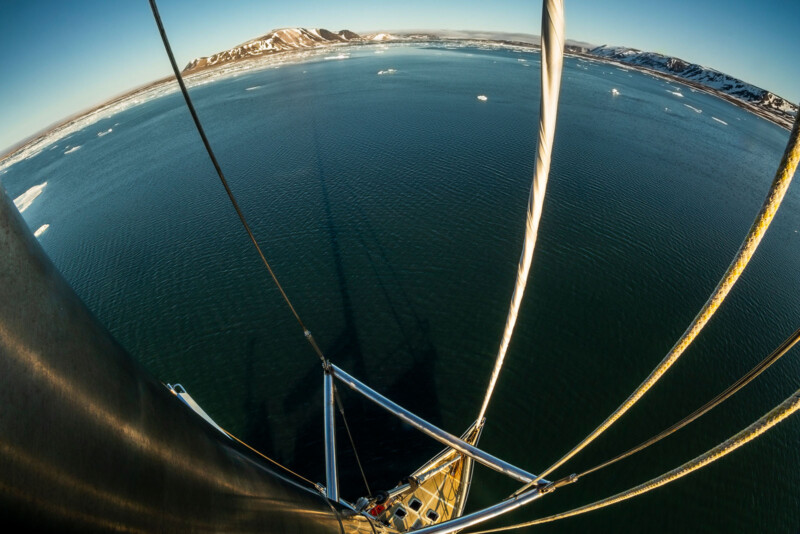
Odermatt is also painfully aware of how climate change harms the beautiful places she’s been to and still wants to go. She hopes that people become more thoughtful about the polar regions and the danger they face.
The Nature Photographer’s Goal
Heike Odermatt describes her photographic style to PetaPixel as “always looking for a certain harmony and stillness, perhaps because I need it myself.”
“For me, less is usually more, and sometimes I photograph with a wink. Images that speak for themselves are important, but sometimes I like to puzzle the viewer,” Odermatt explains.
“With my photography, I want to bring nature and its beauty, but also its vulnerability, closer to the viewer,” she says.
She wants her photography to provide viewers with a stronger feeling toward nature and to help people see its beauty and learn to love nature. It’s so important that people value nature and the environment, as it’s the first step toward taking better care of the planet. Odermatt considers this her mission as a photographer.
Odermatt Reflections on her Photography
While Odermatt has many more photographic goals to accomplish, it’s always worthwhile for artists to reflect on where they’ve been when charting the course for where to go next.
“My favorite photos have changed regularly through the years, and I can’t point to any real favorites now, but I want to highlight two older photos. They were important for me at the beginning of my nature photography career.”
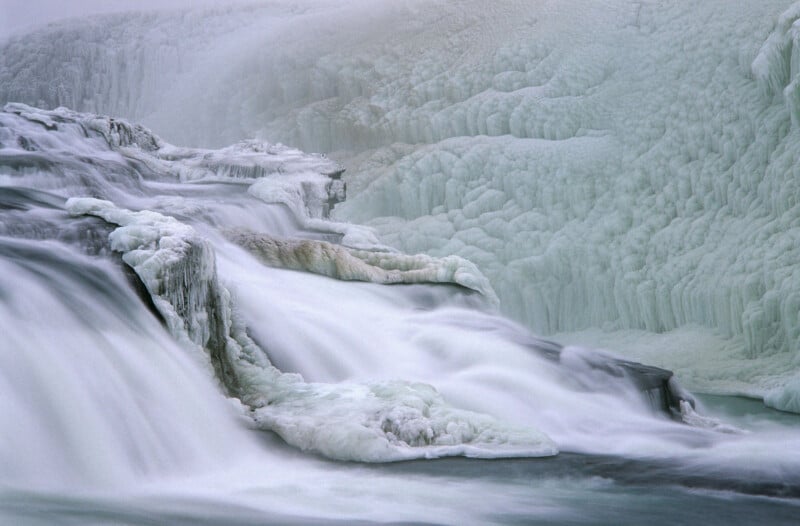
“In 2002, I visited Iceland for the first time, and this was also my first trip purely aimed at nature photography. In 2004 I visited Iceland again, this time with a small group of photographers, still using analog technology. During this trip, we hardly had any snow, and the temperature was mostly above freezing,” Odermatt recalls.
“On the way to the Gullfoss waterfall, all we had was rain and, as a result, very green surroundings. Due to the water flying up, it was difficult to see across to the other side, the side covered with ‘cauliflower,'” she continues.
“I took advantage of the few seconds it was visible through the mist of water. Sometimes you make a photo that you think you will be really proud of. The photo you cannot wait to see developed. This was one of those photos. To me, this was the most important photo of this journey, and I could hardly wait until I got the slides of the photo lab back in the hope that this particular slide roll was not damaged. I made this photo at the beginning of my career, but to me, it still signifies all I love, a wintery, fairytale-like image that takes you into another reality.”
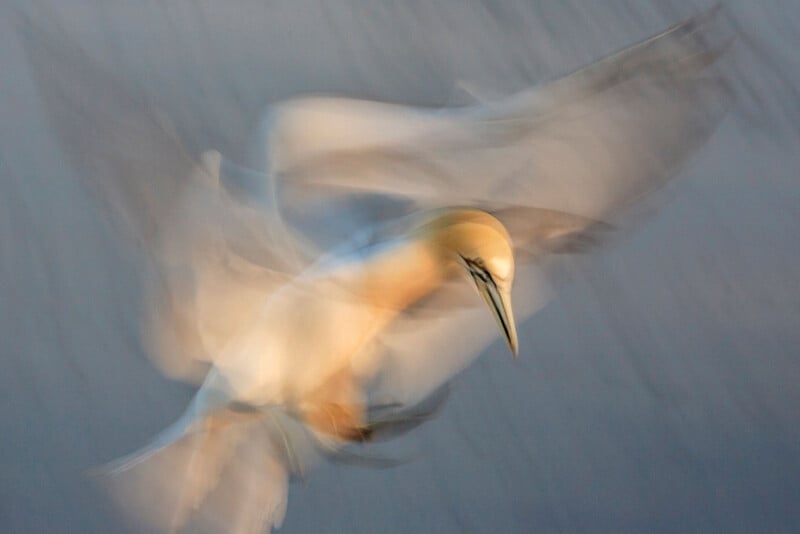
“I like this photo because it’s more than just a photo of a Northern Gannet. Because of the long shutter speed and the special movement of the wings and tail, it becomes a more picturesque image of an angelic bird. The last rays of sunshine give the photo a warm look,” Odermatt says about the image above.
“There is a longer fragment in this image, which shows how the wings and tail move while landing. For me, this photo reflects the freedom and happiness that I felt the night that I took this photo.”
Odermatt captured this photo in the Lummenfelsen in Helgoland, Germany. It’s a popular area that tourists and photographers frequent. However, patience won the day. During dusk, the area became quieter, and finally, Odermatt was the last person left.
“I was all alone in an area that is usually very busy and felt the freedom,” Odermatt explains.
She enjoyed the experience and was rewarded with a last bit of light that burst through the heavy clouds, allowing her to capture this beautiful photo.
Heike Odermatt’s Portfolio Reflects Talent, Creativity, and Patience
No matter when Odermatt captured a particular photo in her portfolio or what equipment she used, some themes run through all her work. She expertly captures wonderful moments in nature. Sometimes they’re outwardly spectacular. Other times they’re quiet and serene. In every case, her photos are beautiful.
While she can no longer travel like she once could and doesn’t capture as many photos anymore, Odermatt has remained committed to sharing the beauty she sees in nature to spectacular effect.
A photographer’s most essential tool isn’t their camera; it’s what’s just behind the camera. In Heike Odermatt’s case, her mind and photographer’s eye have proven remarkably powerful.
![]()
She has repeatedly proven the importance of patience, persistence, and readiness for the moments that don’t always materialize. Great photography cannot be forced. It must be given the time and space to happen. When these amazing moments occur, Odermatt is ready.
More of Heike Odermatt’s incredible work can be seen on her website. She is also on Instagram, where followers can keep up with her latest work.
Image credits: All images © Heike Odermatt